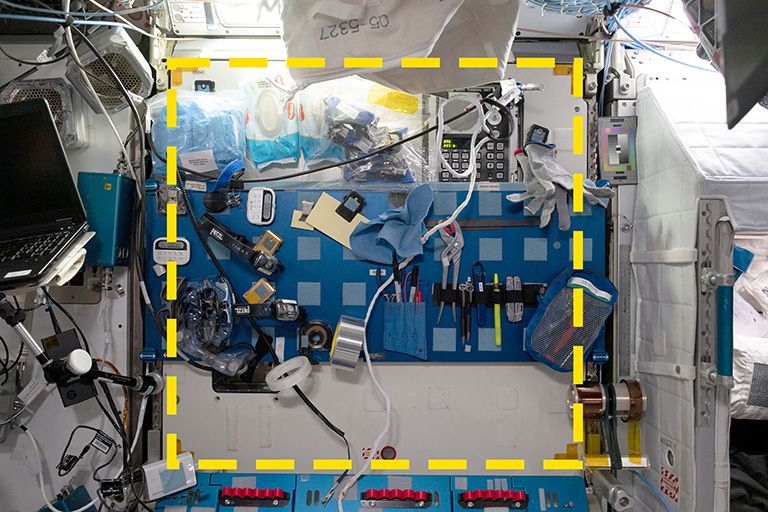Archaeology investigators spotted a “rarely used computer” on the International Space Station near the toilet, in a spot the device wasn’t expected to be.
The fresh finding illustrates how astronauts on the International Space Station are making the most of a crowded laboratory that has been occupied full-time by humans since 2000, a new study shows.
The new work, published in PLOS One on Aug. 7, is part of a peer-reviewed series from the International Space Station Archaeological Project that used a popular technique on Earth to track object usage in space. It’s called the “test pit.”
Related: ‘Astronaut archaeology’ could improve space station design. Here’s how
On Earth, archaeology digs often use sample pits across the site to assess where artifacts were left behind. The ISS is more challenging to track in that respect, given everything floats and everyone uses the walls and ceilings for storage alongside the floor.
So the study team instructed the ISS astronauts to square off six areas around the six-bedroom complex and take pictures of those zones periodically, to see how items shift around the station over time.
A past study from this group published in 2023 uncovered a cake frosting mystery, as cake cannot “rise” in space and it was unclear what the frosting would decorate. It took some time to get answers from the busy ISS crew, but they eventually revealed the topping was used on premade muffins for Russian cosmonaut Pyotr Dubrov’s birthday on Jan. 30, 2022 during Expedition 66.

The new study, examining a wall across from the toilet and nearby exercise equipment in the ISS U.S. Tranquility module (Node 3), uncovered a range of unexpected items: the aforementioned computer, a range of resealable bags and even toiletries. All of these were sitting in a spot officially designated for equipment maintenance.
The conclusion? “Little or no maintenance [was] actually carried out there,” the investigators wrote in a press release issued by PLoS.
Related: NASA just recycled 98% of all astronaut pee and sweat on the ISS (engineers are thrilled)
NASA is busy studying how to have commercial companies create next-generation space habitats after the ISS retires in 2030. Perhaps, the study authors said, “the findings could also help inform development of future space habitats.”
The authors emphasized tracking artifacts in space has broader implications for understanding how humans use and store objects in locations more generally.
“We [… ]have the opportunity to explore not only actuality of object use, but also potentiality of use or function, and the meaning of that quality for archaeological interpretation,” they wrote in the study.
While the ISS is modern, the ideas the study authors draw upon are ancient: Aristotle’s “Metaphysics” discussed the “potentiality” of objects and their use, and why that’s important, in the fourth century BCE.
“Not gonna lie, this is my favorite reference in our space archaeology article,” study lead author Justin Walsh, a professor of art history, archaeology, and space studies at California’s Chapman University, wrote on X (formerly Twitter) on Aug. 7.
“You can take the boy out of the ancient Mediterranean, but you can’t take the ancient Mediterranean out of the boy,” Walsh continued, with a laughing emoji to emphasize the joke.
The six locations taped off in the ISS included:
- The galley table in Node 1, Unity;
- The starboard workstation in Node 2, Harmony module;
- The wall across from the toilet (waste and hygiene compartment) in Node 3, Tranquility module;
- The science rack on the forward wall of the Japanese Kibo module;
- The science rack on the forward wall of the European Columbus module;
- A rack on the port side of the U.S. Destiny module (the crew’s choice).